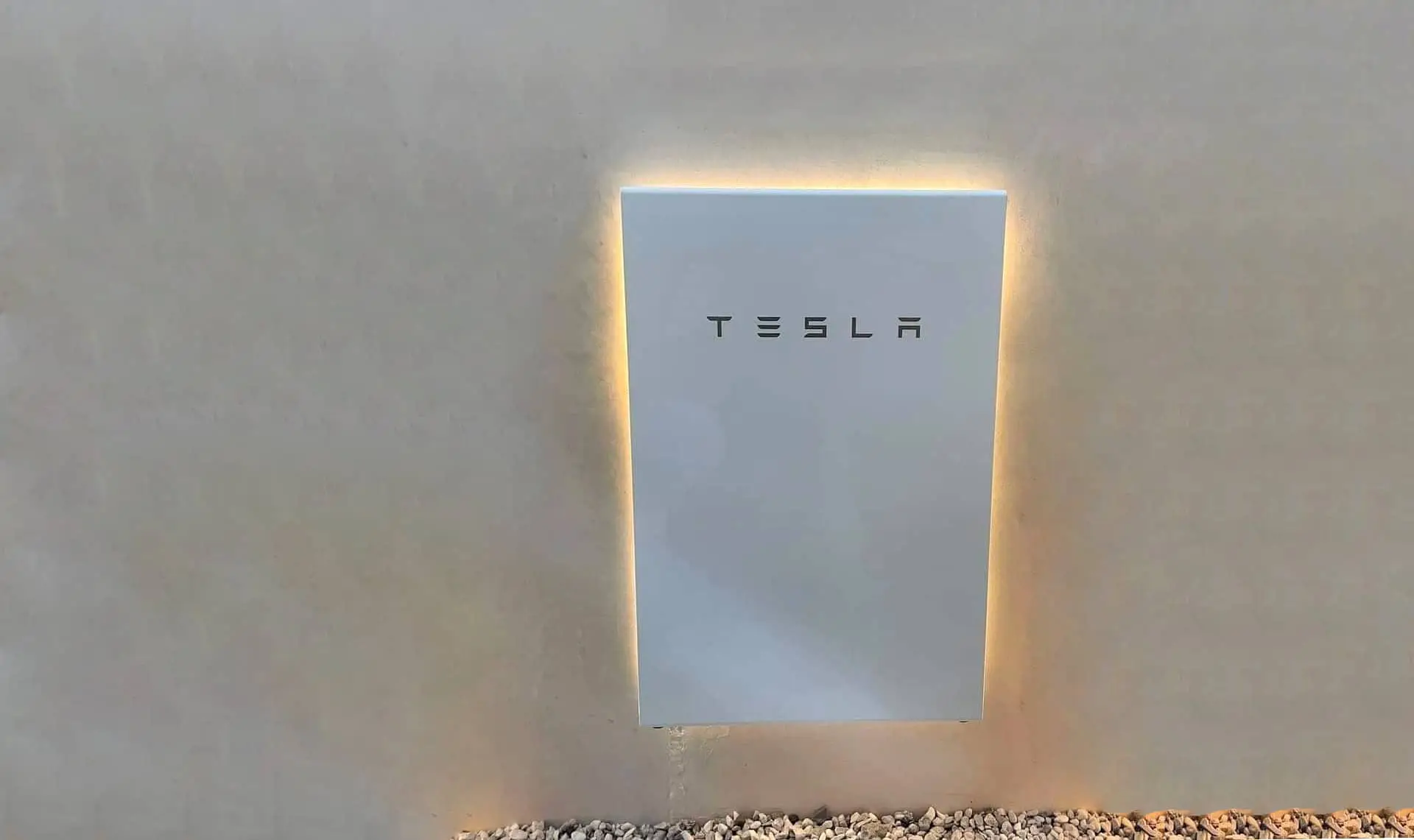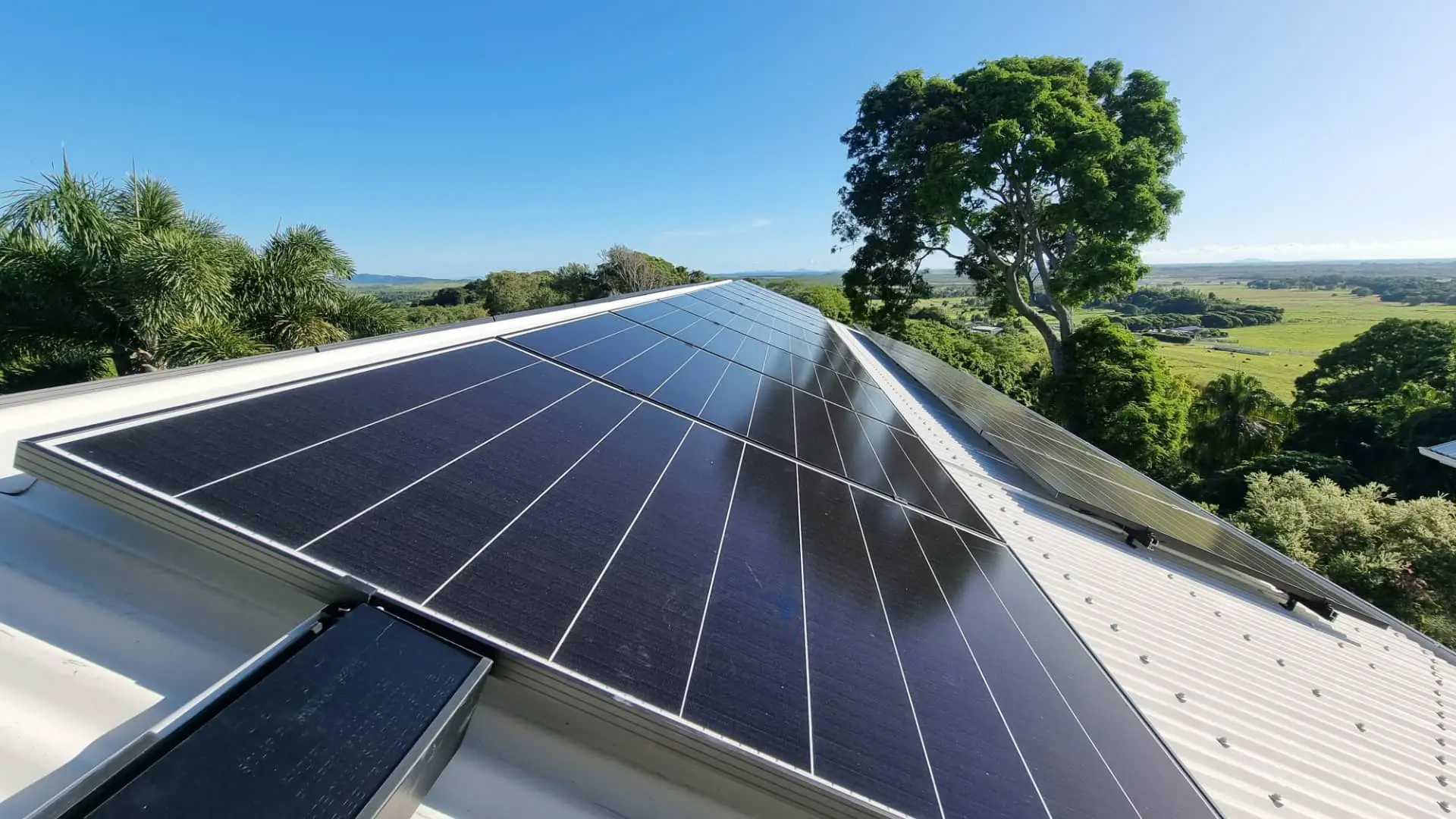With the increasing popularity of solar energy, the need for efficient and reliable solar battery storage systems has also risen. Solar batteries enable homeowners and businesses to store excess solar energy for use during periods of low sunlight or at night, reducing reliance on the grid and maximising energy savings.
Among the leading contenders in the solar battery market are Tesla Powerwall, BYD Battery Boxes, Sungrow LFP, and Q CELLS Q.Home Core. In this article, we will evaluate these options and determine which one stands out as the best choice for consumers.
Tesla Powerwall
Tesla Powerwall, produced by the renowned electric vehicle manufacturer Tesla, has gained significant attention due to its sleek design and integration with the Tesla ecosystem. Powerwall offers a storage capacity of 13.5 kWh and can deliver a peak power output of 7 kW.
It features advanced energy management software, allowing users to optimise energy consumption and monitor performance through a user-friendly mobile app. Powerwall also supports time-of-use and backup power functionality, making it a versatile choice for homeowners. However, it is worth noting that Powerwall’s price point tends to be higher compared to some competitors.
Key Features:
- Storage Capacity: 13.5 kWh
- Peak Power Output: 7 kW
- Integration with the Tesla ecosystem
- Advanced energy management software
- Time-of-use and backup power functionality
- User-friendly mobile app for monitoring and control

BYD HV & LVS Battery Boxes
BYD, a Chinese manufacturer specialising in energy storage solutions, has made considerable strides in the solar battery market. The BYD Battery Box HV is a highly scalable and modular system, offering a range of storage capacities from 8.0 kWh to 307 kWh. With a peak power output of 10 kW, it is suitable for both residential and commercial applications.
BYD batteries are known for their robust performance, long cycle life, and high energy efficiency. Additionally, the company provides excellent technical support and a comprehensive warranty. However, BYD products may not be as widely available in certain regions compared to Tesla Powerwall.
Key Features:
- Scalable and modular system
- Storage Capacity: Range from 8.0 kWh to 307 kWh
- Peak Power Output: 5.12 – 23.04kW
- Robust performance and long cycle life
- High energy efficiency
- Excellent technical support and warranty

Sungrow LFP Solar Battery
Sungrow, a leading global inverter manufacturer, has expanded its product line to include solar battery storage solutions. The Sungrow Power Battery offers a storage capacity of 4.8 kWh and a peak power output of 2.5 kW. It boasts an impressive depth of discharge (DoD) of 90%, allowing users to maximise their energy usage.
The battery features a compact design, making it suitable for space-constrained installations. Sungrow has a strong reputation for its high-quality inverters, and their battery offering aims to complement their existing product range. However, the lower storage capacity and power output may limit its suitability for larger residential or commercial applications.
Key Features:
- Storage Capacity: 9.6 – 25.6kWh
- Peak Power Output: 17.52kW
- High Depth of Discharge (DoD): 100%
- Compact design for space-constrained installations
- Integration with Sungrow’s existing product range
- Strong reputation for high-quality inverters

Q Cells Q.HOME CORE
Q CELLS, a prominent player in the solar industry, has also entered the solar battery market with its Q.HOME+ ESS-G1 battery system. The Q.HOME+ ESS-G1 offers a storage capacity of 10.0 kWh and a peak power output of 5 kW. It utilises lithium-ion phosphate battery technology, known for its safety and long cycle life. Q CELLS battery system is designed to integrate seamlessly with their solar modules and inverters, ensuring optimal performance and compatibility.
The company’s reputation for quality and reliability carries over to their battery solutions, making them a strong contender in the market. However, the limited storage capacity and power output may not meet the needs of some larger installations.
Key Features:
- Storage Capacity: 10.0 kWh
- Peak Power Output: 6.5 kW
- Utilises lithium-ion phosphate battery technology
- Seamless integration with QCELLS solar modules and inverters
- Emphasis on quality, reliability, and safety
- Long cycle life of batteries

How Much Do Solar Batteries Cost?
The prices of solar battery systems can vary depending on various factors such as the storage capacity, power output, brand, region, installation costs, and any additional features or equipment required. It’s important to note that prices are subject to change over time.
Here is a general range of the average prices for the mentioned solar battery systems:
- Tesla Powerwall: The cost of a single Tesla Powerwall (13.5 kWh) is typically around $9,500 to $10,500 AUD. Additional costs for installation, supporting hardware, and optional accessories should be considered.
- BYD Battery Box HV: The pricing for BYD Battery Box HV varies depending on the system configuration and desired storage capacity. As a rough estimate, the cost can range from $7,500 to $25,000 AUD or more, depending on specific requirements.
- Sungrow Power Battery: The cost of the Sungrow Power Battery (4.8 kWh) typically ranges from $2,500 to $4,500 AUD. Additional costs for installation and related equipment may apply.
- Q CELLS Q.HOME CORE: The pricing for the QCELLS Q.HOME+ ESS-G1 (10.0 kWh) can vary, but on average, it may range from $5,000 to $7,500 AUD. Installation costs and any necessary additional components would be additional expenses.
Please note that these prices are estimates and may vary based on location, currency exchange rates, installation requirements, and other factors. It’s advisable to consult with our solar specialists to obtain accurate and up-to-date pricing information specific to your location and needs.
Work with the Battery Specialists
While all four options, Tesla Powerwall, BYD, Sungrow, and QCELLS, offer unique advantages, the best solar battery choice ultimately depends on specific requirements and preferences.
To make an informed decision, potential buyers should consider factors such as storage capacity, power output, price, availability, and compatibility with existing systems. Ultimately, the best solar battery will be the one that meets individual needs while providing reliable, efficient, and cost-effective energy storage.
At SnapSolar, we help homeowners and businesses in Mackay and the surrounding Queensland area make the shift to off-grid solar confidently and successfully. We’ve helped countless homeowners and businesses do this over the years, and we can do the same for you.
Get in touch with us to learn more and get started today.
Get Your FREE Quote Today & Save $$$!
Contact our team today and we'll get back to you as soon as possible to discuss your solar needs!
Get a FREE QuoteRelated Articles.

How Do I Pick the Right Solar Battery for My Home?

Jackson Wyer

How Long Do Solar Panels Last?

Jackson Wyer

How to Make a Case for Solar To Your Landlord

Jackson Wyer

